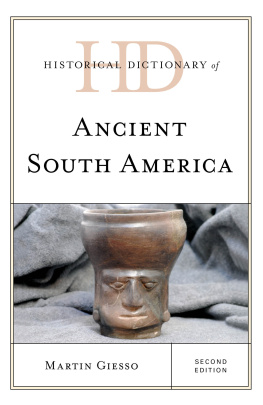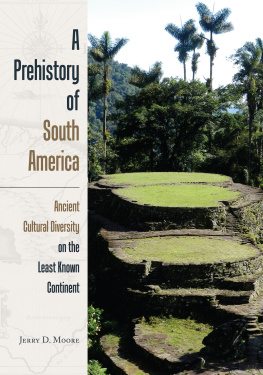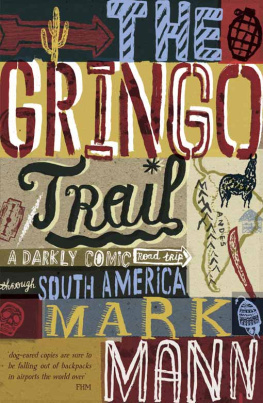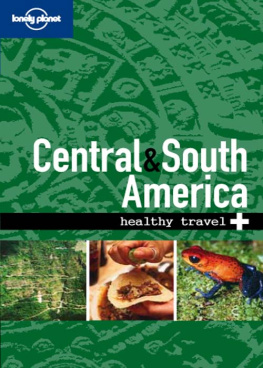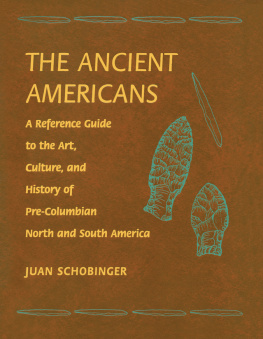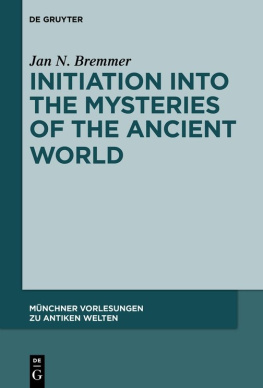Harold T Wilkins - Mysteries of Ancient South America
Here you can read online Harold T Wilkins - Mysteries of Ancient South America full text of the book (entire story) in english for free. Download pdf and epub, get meaning, cover and reviews about this ebook. genre: Art. Description of the work, (preface) as well as reviews are available. Best literature library LitArk.com created for fans of good reading and offers a wide selection of genres:
Romance novel
Science fiction
Adventure
Detective
Science
History
Home and family
Prose
Art
Politics
Computer
Non-fiction
Religion
Business
Children
Humor
Choose a favorite category and find really read worthwhile books. Enjoy immersion in the world of imagination, feel the emotions of the characters or learn something new for yourself, make an fascinating discovery.

- Book:Mysteries of Ancient South America
- Author:
- Genre:
- Rating:4 / 5
- Favourites:Add to favourites
- Your mark:
- 80
- 1
- 2
- 3
- 4
- 5
Mysteries of Ancient South America: summary, description and annotation
We offer to read an annotation, description, summary or preface (depends on what the author of the book "Mysteries of Ancient South America" wrote himself). If you haven't found the necessary information about the book — write in the comments, we will try to find it.
Mysteries of Ancient South America — read online for free the complete book (whole text) full work
Below is the text of the book, divided by pages. System saving the place of the last page read, allows you to conveniently read the book "Mysteries of Ancient South America" online for free, without having to search again every time where you left off. Put a bookmark, and you can go to the page where you finished reading at any time.
Font size:
Interval:
Bookmark:
TRADITIONS ranging right round the world, from China to Colombia and old Per, from the jungle and forest lands of Central America to old Burma, speak of mysterious men in black, from some far-distant highly civilised land, who suddenly appeared in the streets and highways warning the people of the eastern and western world of wrath to come, and the destruction of the rich, powerful and decadent cities of the plain. Both in Asia and old South America, they seem to have made their apocalyptic advent in a day when neither the mighty Himalayas nor the Andes had reached the cloud-topping heights at which they have been standing since the days of modern and written history. Chronology, even approximately correct, is, at this time, impossible to establish. All we can say is these men in black vanished, apparently as suddenly as they had appeared in America and Southern Asia, prior to 11,000 B.C., when Atlantis was submerged and the cities of Hy-Brazil, her royal and imperial colony, became, as the Hebrew poet said of other ages and peoples, annihilated in:
"... The day of the Lord's vengeance... the streams shall be turned into pitch and the dust into brimstone, and the land shall become burning pitch. It shall not be quenched by night or day. The smoke shall go up for ever and ever... The cormorant and the bittern shall possess it... and he shall stretch out upon it the line of confusion and the stones (or plummets) of emptiness. They shall call the nobles thereof to the kingdom, but none shall be there. Her princes shall be nothing. Thorns shall come up in her palaces, nettles and brambles in her fortresses; and it shall be a habitation of dragons..."
Had such a poet and prophet a vision of men, of a far distant day, sounding with plummets some bottomless well in just such a stone city of the unknown dead, as did the old bandeiristas of Lusitanian Brazil in the year A.D. 1750?
As other traditions, current in the mystic East, say of these lands of the morning of our world:
"These great centres and cities of the plain became so degraded and corrupt, that it was impossible to purify them, and they were swept away by the besom of the wrath of the Great Central Sun of the Cosmos."
But it seems probable that when the men in black were preaching and civilising in Central America, on the western side of America, and in South-Eastern Asia, the giant disaster that wrecked the cities of Atlantean Brazil and the motherland of Atlantis was still an age away. May be, the general feeling of insecurity after a minor, but still terrifying volcanic upheaval of the earth's crust in Hy-Brazil, and ranging along an earthquake belt to the motherland of Atlantis, had sent them forth on the orders of their rulers. One can hardly conceive that the lands had sunk to the decadence pictured in the old myths, unless these men in black were merely the missioners of a decent minority of Atlantean folk. None can yet say. We know not.
Colonel P. H. Fawcett, who, with his son and son's friend, Mr. Rimell, may be presumed to have perished there is no definite information either way, but only what amounts to a legal presumption, in the lapse of nearly twenty years in the gallant effort to solve the mystery of the Atlantean Empire in old Brazil, points out an amazing fact about the tremendous age of this high civilisation of Hy-Brazil, Royal Brazil (or Imperial Atlantis), as the old Irish Keltic wanderers called it. He says that the ancient native Brazilian name for the Rio Amazonas, the Amazon, which is Maraon, was originally borne by the Mexican Gulf, in a day when an arm of that gulf must have extended to the Amazon. It is significant, too, that another old native name for the Mexican Gulf was Orinoco, the name borne by the great river of Guiana-Venezuela. The remote day when the Mexican Gulf reached to the Amazon was during the heyday of Atlantean Brazil, or Hy-Brazil, the royal colony of the great mother-land.
The pioneer Quetzalcoatl, who, probably, came from Atlantean Brazil on a civilising mission to barbarian and savage Central America, was, it may be necessary to repeat, as the myths of ancient Mexico make clear, a man, not a god. One may call him a divine man, later deified as was Osiris, and the other gods and goddesses of the Egyptian Nile, who, as Manetho showed, were merely men and women who had achieved great pioneering and cultural works. The ancient Mexicans said Quetzalcoatl came to them from a land to the south-east, and that his symbol was the feathered serpent. It will be remembered that the serpent was found carved in stone in some parts of the dead Atlantean city in Bahia province. Slightly varying accounts are given of Quetzalcoatl.
Father Bernardino Sahagun, the famous missioner and historian among the Mexicans, after the days of the conquistadores, was told:
"Quetzalcoatl had a dark countenance, all his body was clothed in a shirt wrought like a surplice, that did not reach to the girdle of the waist. From the knee to the leg was covered with buskins of tiger-skin, ornamented with sea-shells. He wore sandals."
Fray Juan Torquemada, the Franciscan missioner, who collected traditions about Quetzalcoatl from the natives of old Mexico, among whom he worked in the years after the Spanish conquest, says:
"Quetzalcoatl, it is held for certain, was a man of upright character, elegant carriage and was white and blonde (blanco), with a ruddy face (rubio) and bearded. His beard was long. He was of benevolent disposition and learned, and a great personnage. His hair was long and black..."
Torquemada, however, in the same rare book, Monarquia Indiana, says:
"Quetzalcoatl had blonde hair, and wore a black robe sewn with little crosses of red colour."
The Mexican Codex Chimalpopoca, written in the native Nahua tongue (and already mentioned in Chapter I), seems to suggest that there had been several (three) attempts from some land across the eastern sea to civilise the savages and barbarians of Central America; but that all had failed before Quetzalcoatl came on the scene. This seems to be borne out by the discovery, in A.D. 1927, by the American Indian Foundation Fund diggers, of remains of a great temple, beautifully coloured pottery, stone monuments and idols, or statues of men, all lying under many feet of volcanic ash, and far more ancient than Mayan or Aztec civilisations. These remains must be at least 12,000 years old. They were found in the Cocle province of Panama state.
According to Torquemada, twenty chiefs, led by a great man, Quetzalcoatl, arrived "out of the blue", one day, from the north-west. (?) They landed at Panuco, now a village about twenty-five miles south-west of Tampico, in Vera Cruz...
"They were men of good appearance, well-clothed, in long garments of black cloth like the cassocks of priests, open in front, but without the cowls, the neck cut in crescent shape, short sleeves, but wide, with nothing at the elbows. This dress the natives use, today (in seventeenth century), in their dances and ballets, in imitation of these ancient folk. These latter went forward from Panuco, showing good manners, giving no occasion for war or fighting, stage by stage, till they reached Tullan, where the natives of this province received and lodged and entertained them."
The country from which they came, according to the Popul Vuh, or Bible of the Quichs of Western Guatemala, was in the east, "where red and white men lived in joy: their aspect gentle and sweet, their language pleasant, and their minds very intelligent".
Torquemada says the men were Toltecs, and that their leader, Quetzalcoatl, had come from a land not submerged, but one which the ruling class considered so unstable, owing to occasional cataclysms, that they looked out for a settlement elsewhere. On this point, it will be recalled that Colonel Fawcett pointed out that all the dead cities of Brazil had been overthrown by violent earthquakes.
Font size:
Interval:
Bookmark:
Similar books «Mysteries of Ancient South America»
Look at similar books to Mysteries of Ancient South America. We have selected literature similar in name and meaning in the hope of providing readers with more options to find new, interesting, not yet read works.
Discussion, reviews of the book Mysteries of Ancient South America and just readers' own opinions. Leave your comments, write what you think about the work, its meaning or the main characters. Specify what exactly you liked and what you didn't like, and why you think so.

